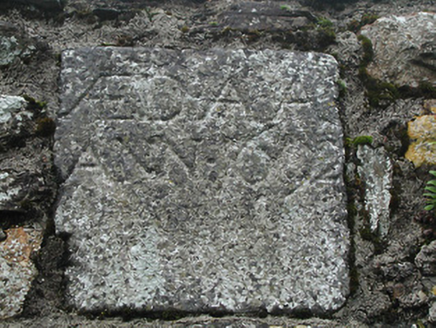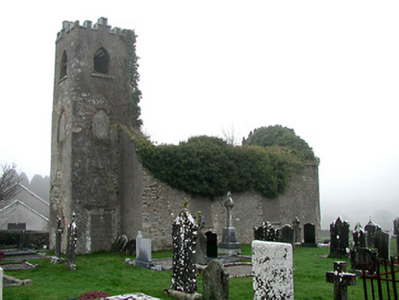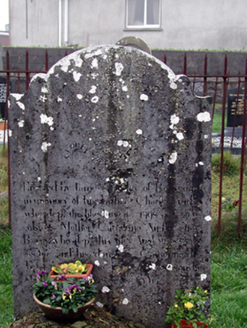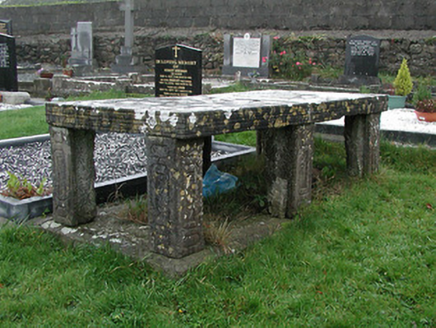Survey Data
Reg No
12324001
Rating
Regional
Categories of Special Interest
Archaeological, Architectural, Artistic, Historical, Social
Original Use
Church/chapel
Date
1790 - 1810
Coordinates
270873, 134133
Date Recorded
17/05/2004
Date Updated
--/--/--
Description
Detached two-bay double-height single-cell Board of First Fruits Church of Ireland church, c.1800, with single-bay three-stage entrance tower to west on a square plan. In use, 1903. Now in ruins. Pitched roof now gone with no rainwater goods surviving on cut-stone eaves. Roof to tower not visible behind parapet (presumed to be gone). Unpainted roughcast walls over random rubble stone construction (exposed in parts where render disintegrated) with Irish battlemented parapet to tower having cut-stone coping. Window openings to nave (profile not discernible under ivy) with cut-stone sills, and cut-stone surround to east (now blocked-up with unpainted render over). Pointed-arch openings to upper stages to tower with cut-stone sills, red brick block-and-start surrounds, and remains of louvered panel fittings to top (bell) stage (now blocked-up to second stage with unpainted render over). Square-headed door opening to tower with carved cut-granite surround having keystone (now blocked-up with unpainted roughcast over). Set back from road in own grounds with random rubble stone boundary wall to perimeter of site (one inscribed stone dated 1692) incorporating camber-headed gateway having squared rubble stone piers, red brick voussoirs, wrought iron gate, and rubble stone parapet over. (ii) Graveyard to site with various cut-stone markers, c.1800-present.
Appraisal
A compact church conforming to a standard arrangement of nave and tower associated with churches sponsored by the Board of First Fruits (fl. c.1711-1833). Having fallen into ruins following a prolonged period out of use the church forms a landmark of some Romantic quality in the locality while surviving as an important element of the architectural heritage of The Rower on account of the status as a reminder of the once-prosperous Church of Ireland community in the area. An attendant graveyard contributing to the setting value of the site includes a number of cut-stone markers of artistic design merit while the presence of an inscribed stone dating to the late seventeenth-century identifies the long-standing occupation of the grounds together with the potential archaeological significance of the site.







